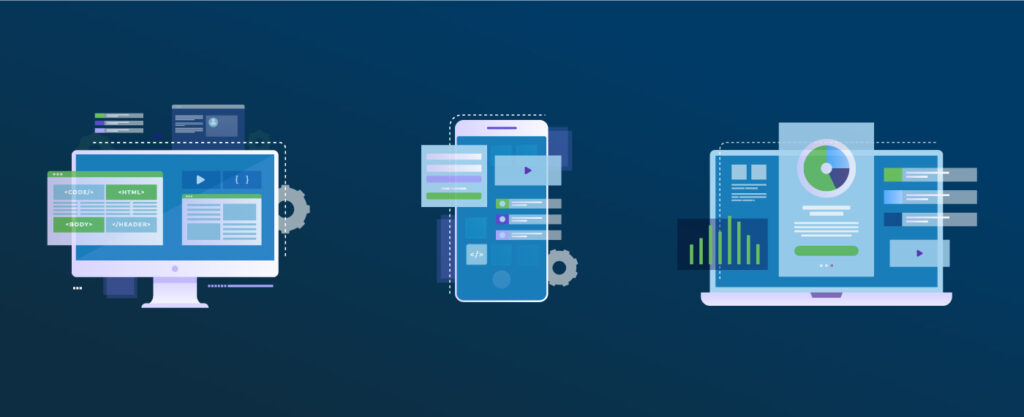In our work with government clients, we see that county and city governments face mounting pressure to modernize their public-facing websites. These online portals serve as the primary interface between government entities and the communities they serve, shaping perceptions, fostering engagement, and facilitating access to vital resources. More and more, citizens expect seamless access to information and services. However, many of these websites remain outdated, posing barriers to effective communication and citizen interaction, as well as security risks. While the prospect of modernization may seem daunting, the benefits far outweigh the costs, and here’s why:
- Enhancing User Experience: Outdated websites often suffer from poor navigation, slow loading times, and cumbersome interfaces, frustrating users and hindering their ability to conduct essential transactions. Modernization involves redesigning websites with a user-centric approach, streamlining navigation, simplifying forms and processes, and incorporating responsive design. By enhancing user experience, governments can improve citizen satisfaction, maximize the utility of online services, and ultimately, foster trust in public institutions.
- Facilitating Transparency and Accountability: Transparency is the cornerstone of accountable governance. A modernized website serves as a transparent platform for sharing crucial information, such as budgets, policies, and public records. By providing easy access to such data in a comprehensible format, governments can promote accountability and empower citizens to hold their elected officials accountable. Additionally, features like interactive maps, dashboards, and data visualizations can offer insights into government activities, expenditures, and outcomes, fostering greater understanding and trust among constituents.
- Adapting to Technological Advancements: Technology evolves at a rapid pace, and governments must keep pace to remain relevant. Modernizing public-facing websites involves adopting cutting-edge technologies, such as Power BI, artificial intelligence, chatbots, and machine learning algorithms, to automate routine tasks, personalize user experiences, and deliver real-time assistance to constituents. Embracing innovation not only enhances operational efficiency but also demonstrates a commitment to leveraging technology for the public good.
- Safeguarding Sensitive Data: County and city government websites often handle a wealth of sensitive information, ranging from personal data of citizens to confidential government records. Modernizing these websites involves implementing robust encryption protocols, secure authentication mechanisms, and data encryption techniques to safeguard against unauthorized access and data breaches. By fortifying defenses, governments can protect sensitive information from falling into the wrong hands and uphold the trust of their constituents.
- Mitigating Cyber Threats: The threat landscape is constantly evolving, with cybercriminals employing increasingly sophisticated tactics to infiltrate systems and wreak havoc. Modernization efforts must include proactive measures to identify and mitigate cyber threats, such as malware, phishing attacks, and ransomware. This entails deploying intrusion detection systems, conducting regular security audits, and staying abreast of emerging threats to preemptively address vulnerabilities. By taking a proactive stance against cyber threats, governments can minimize the risk of disruptions to essential services and ensure continuity of operations.
- Ensuring Regulatory Compliance: In an era marked by stringent data protection regulations, such as the General Data Protection Regulation (GDPR) and the California Consumer Privacy Act (CCPA), compliance is non-negotiable. Modernizing public-facing websites involves aligning with relevant regulatory frameworks, implementing privacy-by-design principles, and establishing robust data governance policies. By adhering to regulatory requirements, governments can avoid costly fines, mitigate legal liabilities, and demonstrate a commitment to protecting citizen privacy rights.
- Addressing Cost Considerations: While the prospect of website modernization may seem daunting from a financial standpoint, the long-term benefits far outweigh the initial costs. Investing in modernization not only improves operational efficiency and citizen satisfaction but also reduces long-term maintenance costs associated with outdated infrastructure. Moreover, there are various funding options available, such as government grants, public-private partnerships, and cost-sharing arrangements, to mitigate the financial burden of modernization.
In conclusion, the imperative to modernize county and city government websites is undeniable. By improving user experience, fostering transparency and accountability, adapting to technological advancements, safeguarding sensitive data, mitigating cyber threats, and ensuring regulatory compliance, governments can better serve the needs of their constituents in the digital age. It’s time to embrace change, prioritize citizen-centric design, and harness the power of technology to build more responsive, inclusive, and effective government websites. The time to invest in progress is now—a proactive approach that will pave the way for more efficient, responsive, and inclusive governance.

